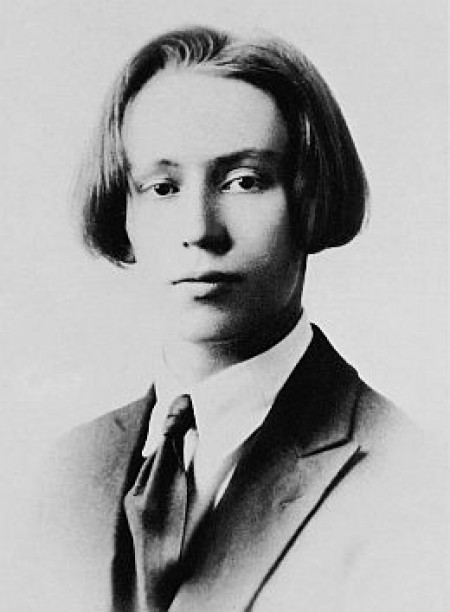
19 January 1903, Budapest - 10 April 1987, Los Angeles
The career of the pianist, Ervin Nyíregyházi, began in Budapest; from the mid-twenties its main location became the United States, mainly California, and that is where it ended. He was Arnold Székely's pupil at the Music Academy till 1913. In 1914 he moved to Berlin, where he continued his piano studies with Dohnányi. From 1918 to 1920 he lived with his mother in Norway, perfecting his piano playing with a one-time student of Liszt.
His artistic career had a remarkable start: he was a child prodigy, who dazzled his concert audiences and the notables of the age all over Europe. His debut in the Carnegie Hall at the age of 17 – in October 1920 –made him an important figure in the concert scene; his appearance and style of playing evoked comparisons with Liszt. Géza Révész, a psychologist of Hungarian origin living in Amsterdam, noticed the young artist when he was thirteen and devoted a whole work based on him to the study of the wunderkind phenomenon (Erwin Nyíregyházi, psychologische Analyse eines musikalisch hervorragenden Kindes, Leipzig, 1916, in English 1925).
In 1917, and then again in 1930-31, Nyiregyházi came to Budapest as part of his European tours, and on both occasions won conspicuous success. From the second half of the 1920's, however, his connections with the concert agencies increasingly tied him to the United States, and from 1930 onwards he settled there permanently. According to his reminiscences, the meteoric rise in his career came to a sudden end in 1925. It was partly the fault of his managers at the time that the twenty-two year old artist, who was not fulfilling contracts motivated by business interests, was left on his own in an alien world. For a while he tried to earn a living by giving private concerts for Hungarians living in New York, but because of his insecure existence, and robbed of the possibility of steady preparation, his career gradually ran aground. After his unsuccessful marriage and subsequent divorce, Nyiregyházi continued his life on the West Coast of the United States.
This phenomenal pianist, who lived in California, mainly in Los Angeles, evoked interest on the whole in private circles – he gave public concerts only rarely. But even in 1935, he made a huge impression on Arnold Schönberg, who wrote in a letter to Otto Klemperer: "…the sounds that he can evoke out of the piano are unbelievable. I have never heard anything like it. (…) his playing creates an impression of unbelievable freshness, talent and conviction. (…) I have never come across such powerful manifestations of musical expression".
From the thirties onwards, his livelihood was secured mainly by way of contracts with the film industry in Los Angeles, where he was given tasks such as sight-reading pianist. In 1959 he returned to Europe for a few concerts, but it became increasingly clear to him that he could no longer undertake, and fulfil the conditions as regards lifestyle, of a concert pianist. At that point he returned to composing. In his youth, in 1919-20, he had three of his compositions published by German publishing houses; all in all, according to his own estimate, he composed about seven hundred works, but did not regard keeping track of them and preserving them as his task.
A new and surprising turn in his life came in 1973, when the leader of the International Piano Archives (IPA), Gregor Benko, heard Nyiegyházi play in an old church in Los Angeles, and asked him to make a recording of Liszt's piano works. The discs made as a result of this rediscovery preserve a historic example of a style of romantic piano playing and tone which are gone by now and cannot be recreated, in which the emphasis was not on faithfulness to the score but on the personal freedom of the player. For the remaining years of his life, Ervin Nyíregyházi never played the piano in public again. He died in Los Angeles on 13 April 1987, at the age of 84.
M. B.


